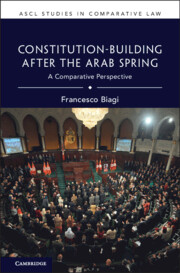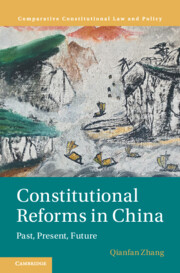Refine search
Actions for selected content:
4 results
5 - Indigenous Land Rights in Chile
- from Part I - Latin America
-
-
- Book:
- Land Rights Now
- Published online:
- 06 September 2025
- Print publication:
- 25 September 2025, pp 98-116
-
- Chapter
-
- You have access
- Open access
- HTML
- Export citation

Constitution-Building After the Arab Spring
- A Comparative Perspective
-
- Published online:
- 31 December 2024
- Print publication:
- 09 January 2025

Constitutional Reforms in China
- Past, Present, Future
-
- Published online:
- 19 December 2024
- Print publication:
- 02 January 2025
7 - Filtering Populist Claims to Fight Populism: Final Remarks
-
- Book:
- Filtering Populist Claims to Fight Populism
- Published online:
- 18 November 2021
- Print publication:
- 25 November 2021, pp 170-185
-
- Chapter
- Export citation
